Spinning Colour! Possibilities for Stranded Colourwork Sweaters
You spot an amazing new knitting sweater pattern and immediately feel inspired. You could spin for the entire sweater, or simply buy the main colour and spin just for the colourwork. Perfect! There are two things to focus on: how to match your handspun to the commercially made yarn used for the body, and how you want to spin the colours to play in the colourwork.
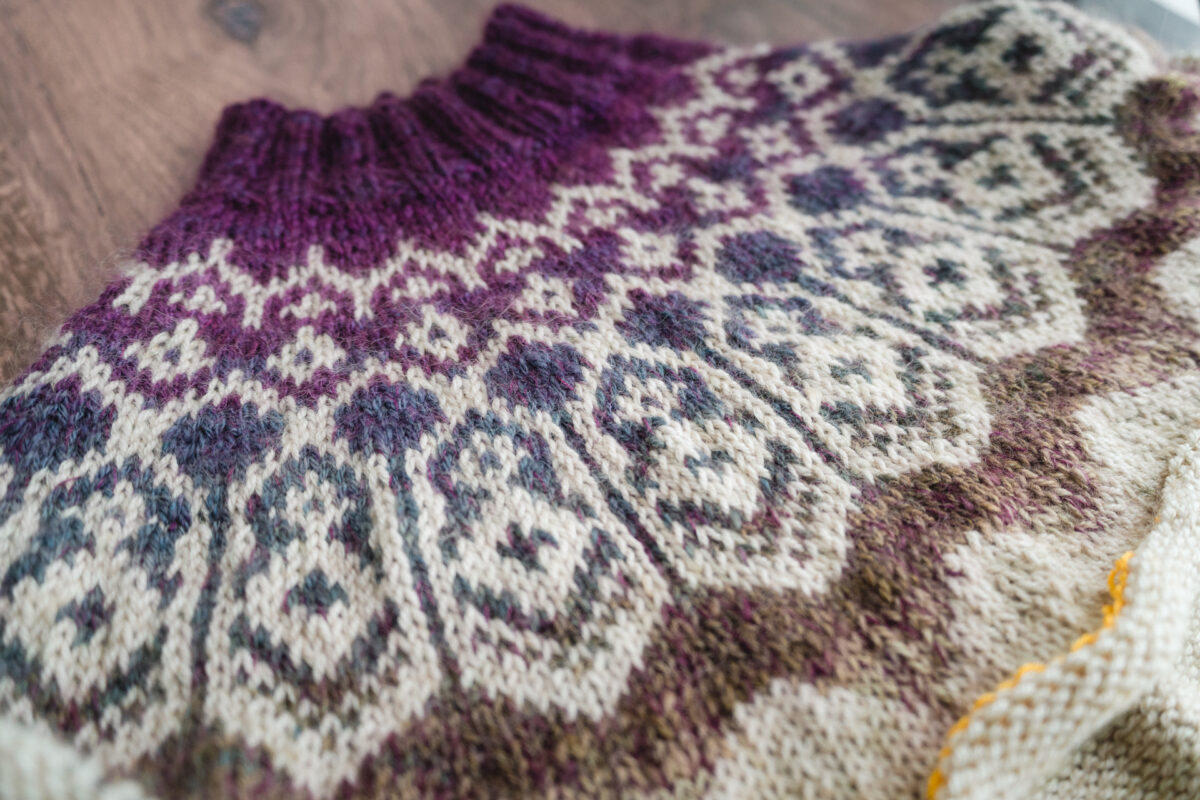
SweetGeorgia BFL+Silk DK (Birch) and SweetGeorgia Silk Mist (Fresh Air) for main colour.
How to Match Your Handspun to Commercial Yarn
Spinning just for the colourwork can be a fun, low-pressure project. It doesn’t require the same level of sampling as spinning for a full sweater, but there are a few important things to keep in mind:
Superwash or Non-Superwash
Think about whether your commercial yarn is superwash or non-superwash. If you pair a superwash yarn for the body with a non-superwash handspun yarn for the yoke, the results may be fine, until the sweater accidentally ends up in the washing machine. The superwash yarn might survive, but the non-superwash colourwork could felt or shrink. If you’re careful and always wash in cool water with minimal agitation, you’ll likely be fine. But if there’s any chance of a mix-up, it’s best to stick to the same type of wool for both parts.
Fibre Type
The same caution applies to fibre breeds. Staying within similar categories, like Merino and Polwarth, both being fine wools, is usually a safe bet. Medium-wool breeds like Corriedale often pair well with Merino, but others, like Wensleydale, may act quite differently in the knitted garment. Just be mindful of how your wool breeds might behave together. Read Rachel Smith’s article, The Nuances of Different Wools: Sheep Breed Classifications, to learn more about sheep breeds and their characteristics.
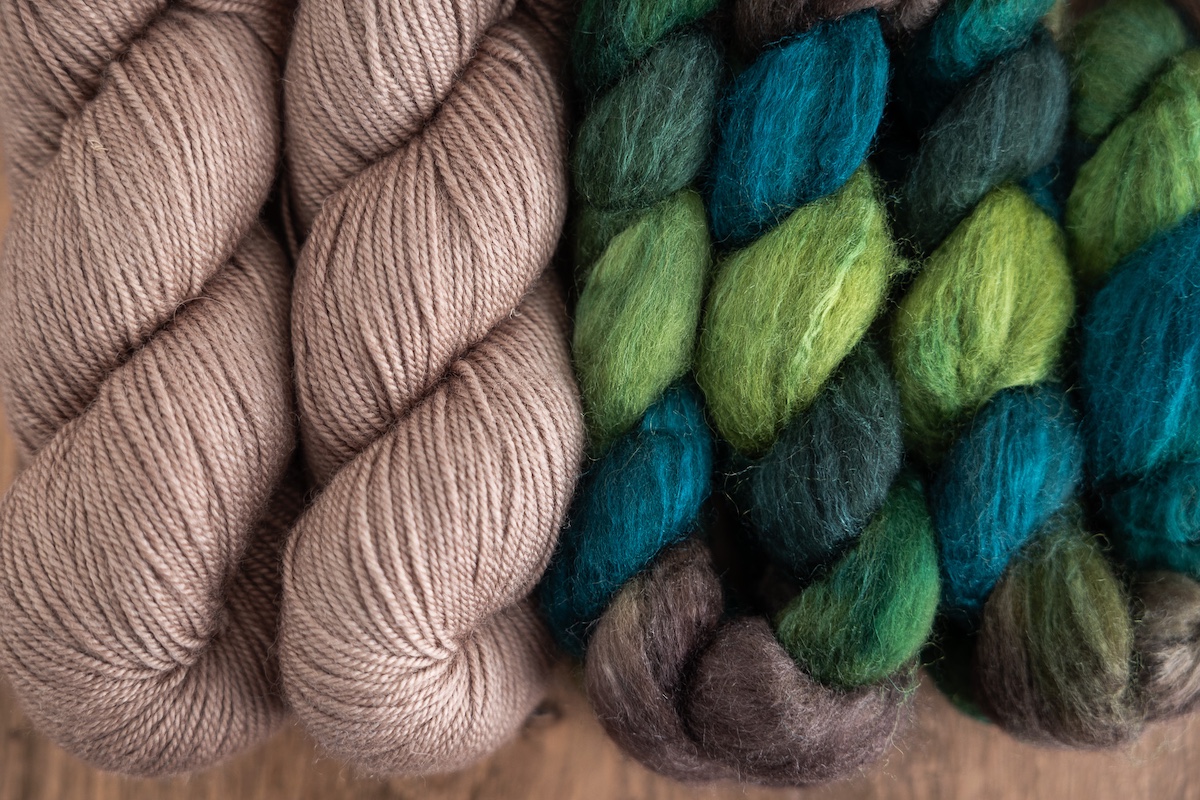
Woollen or Worsted
Take a look at how your commercial yarn is spun. While mixing woollen and worsted yarns in one project can absolutely work, matching the construction styles can help your sweater look more cohesive. Not sure the difference between worsted and woollen, here are two great articles: Worsted vs Woollen Spun Yarns: The Yarn-Making Process by Katrina Stewart on the differences in the fleece to yarn process, and The Many Styles of Spinning Drafts by Kim McKenna on how spinning style effects the yarn finished state.
Wraps Per Inch (WPI)
This might be the most important aspect. If your handspun is 11 WPI and your commercial yarn is 18 WPI, they won’t behave the same in the fabric. The gauge will be off, and your colourwork could puff out or sink in next to the body of the sweater. We loved Kim’s article, How to Achieve Grist & Avoid Skewing Your Count. While the WPI doesn’t have to perfectly match, the closer they are, the better the results!
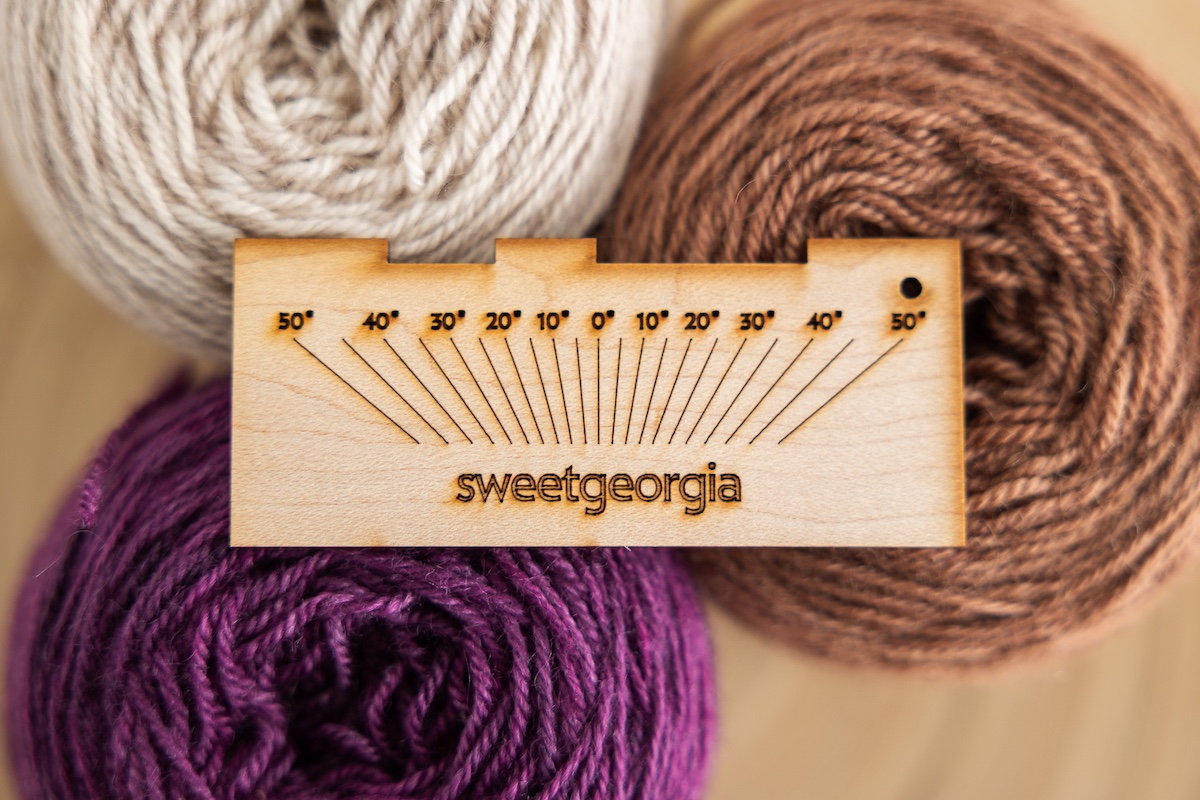
How to Spin the Colour
This is where all the dreaming and inspiration begin. Maybe you already have a braid in mind, or you’re just starting the journey on how to make your inspiration come to life! Let’s look at a few different ways to spin this colour!
Fractals
Fractals are a beloved way to spin hand-dyed braids. They give a mix of short and long colour repeats and are amazing in 2-, 3-, or 4-ply yarns. Debbie Held wrote an article on spinning fractals if you want to dive deeper, Best Practices in Fractal Spinning.
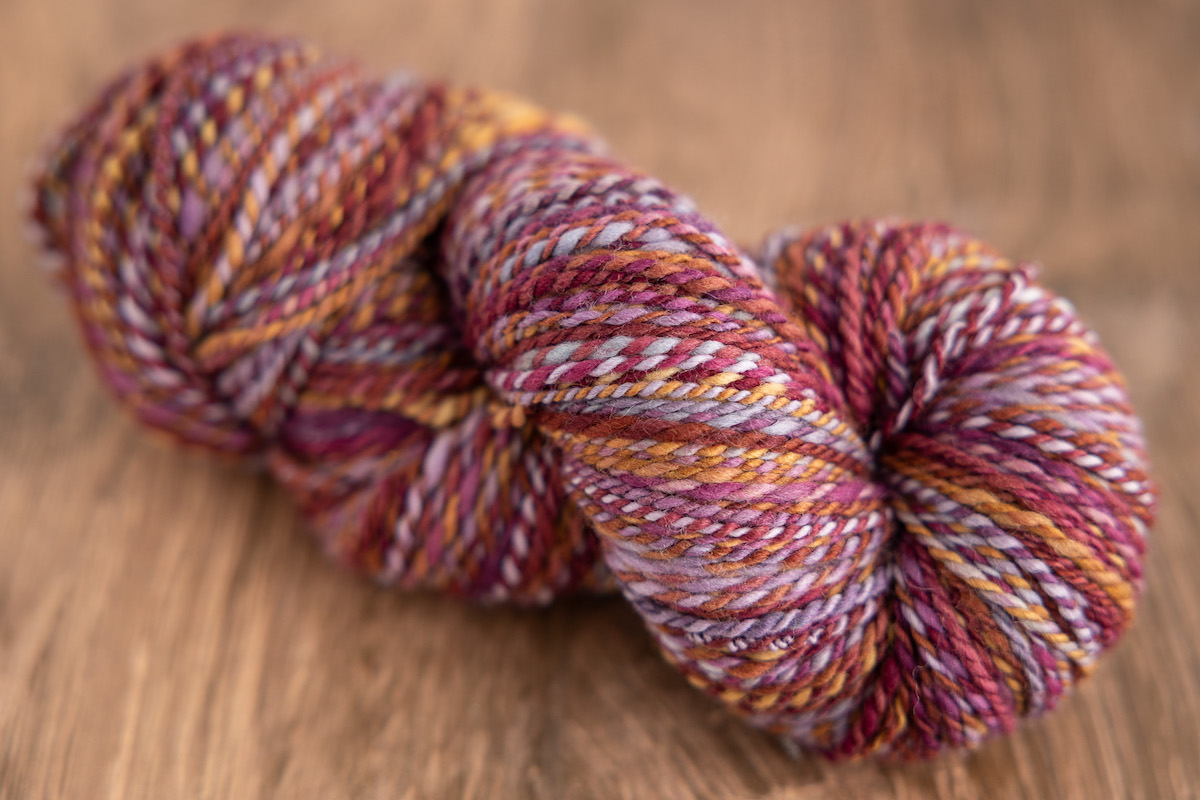
Gradients
Gradients are another favourite, and for good reason. Smooth transitions between colours can add depth and beauty to your yoke. You can get a gradient in two ways:
Already Dyed in a Gradient
Many indie dyers offer braids that shift gently from one colour to the next, like our Tour de Fleece colourway, Butterfly Garden (launching tomorrow, June 3rd). You can spin them end to end and knit as singles, chain ply them as shown by Diana Twiss in her article Chain Plying: On a Wheel or a Spindle, or split them lengthwise into two or three strips to spin separately. When spun separately but in the same colour order, the colours won’t line up perfectly, making it marled between transitions, adding new beauty to your gradient yarn.
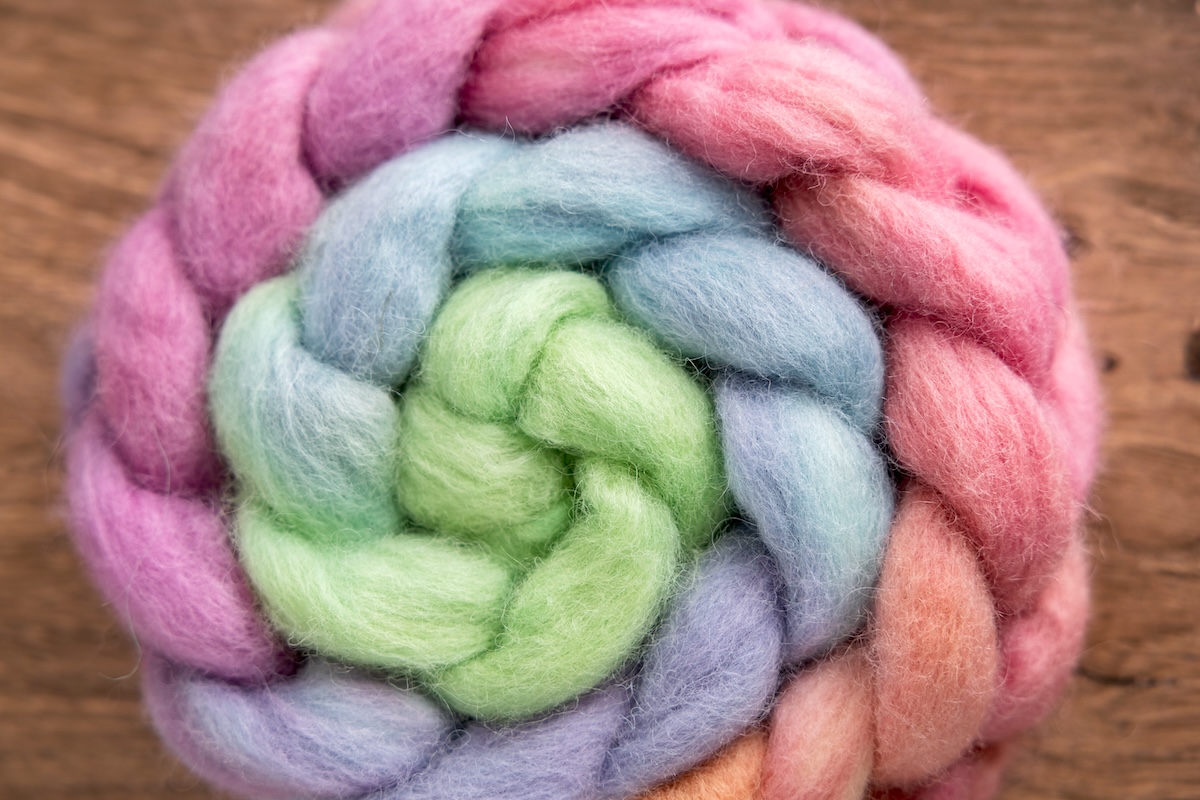
Blend it Yourself
Take sections of each colour in the braid and arrange them the way you want them to appear. Use hand cards or a blending board to create transition piles with 50/50 blends between hues. You can make as many mix piles as you like to get the smoothness or sharp definition of colour change you prefer. It all depends on the look you’re going for and the sweater design you’ve chosen. Kim McKenna goes deeper into this in her course at the School of SweetGeorgia, Spin a Hand-dyed Braid Five Ways.
Random
If fractals feel too stripy and gradients too planned, go for random. Use a blending board to mix the braid without a set pattern, pull off strips (or rolags), and spin as-is. This can work beautifully with braids that feature analogous colours, giving you a rich, optical colour mixing.
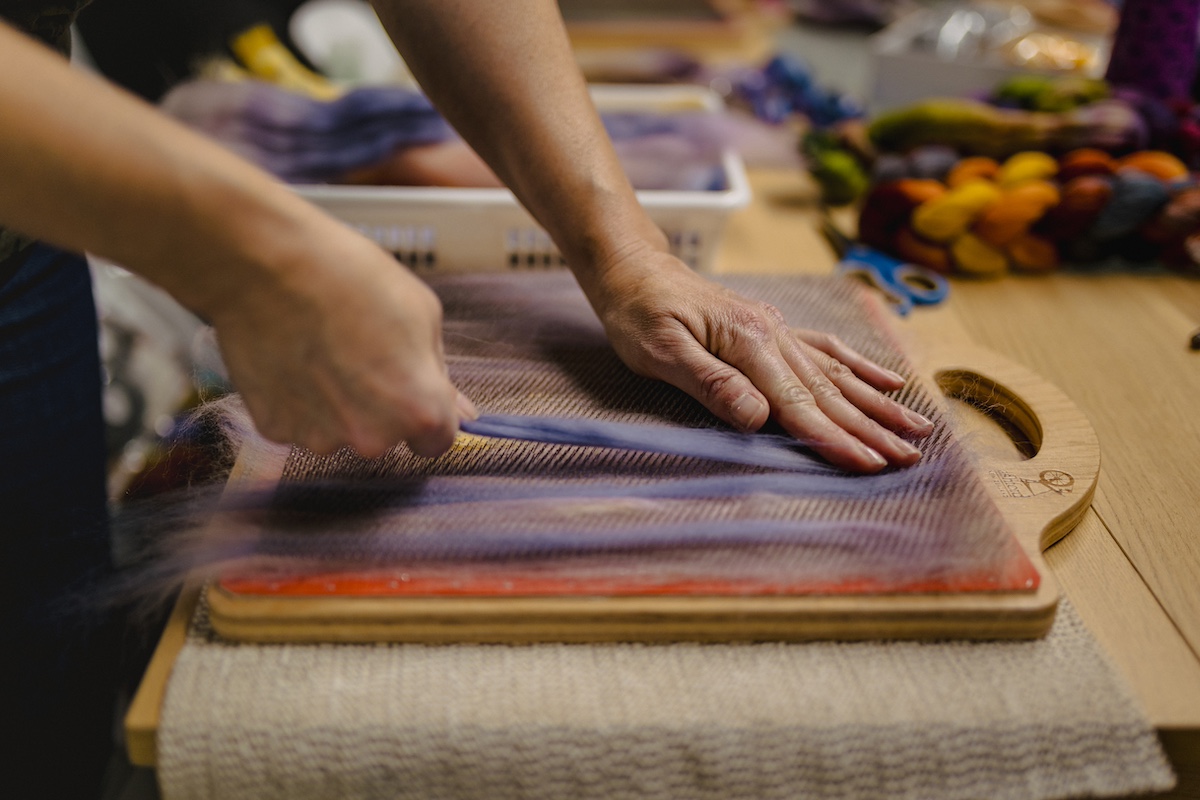
Putting It Together
Now that you know how you want the yarn to be constructed and how you want the colours to play out, it’s time to put it all together.
Fibre Prep for Colour & Structure
This is where you think about how fibre prep influences your yarn. If you want a worsted yarn, rolags may not be the right choice, but you can still get the texture you want by adjusting your drafting style. Even spinning a semi-woollen yarn might give you just the right balance. If you are not sure on how your spinning drafts may effect your yarn, watch Katrina’s course, Spinning Up a Level. To explore into the effects of fibre prep, Kim’s course, Nuances to Spinning Better Yarns is where to dive in!
Swatching
It’s a good idea to spin and swatch a small sample, even if it is just 3 to 5 grams. This lets you see how your handspun plays with the commercial yarn. Most colourwork yokes use less than a skein, so spinning even 10 to 20 grams to swatch shouldn’t affect your overall yardage. If you’re concerned, pick up a second braid. Having extra fibre is never a bad thing. Leftovers can always be blended into future projects. Knitters love leftover yarn scraps for playing, spinners can do the same with extra fibre from sample spinning from a braid!
Check Colour Contrast
Swatching also helps with evaluating contrast. Whether you prefer subtle or bold colourwork, make sure your handspun and commercial yarns show up clearly against each other. A black-and-white photo can help, but handspun yarns with many colour changes can be tricky to assess this way. Take several photos at different angles and in natural light. You can also make a few samples from different areas of your braid, and swatch with them, to get a clearer sense of how your colourwork will knit up.
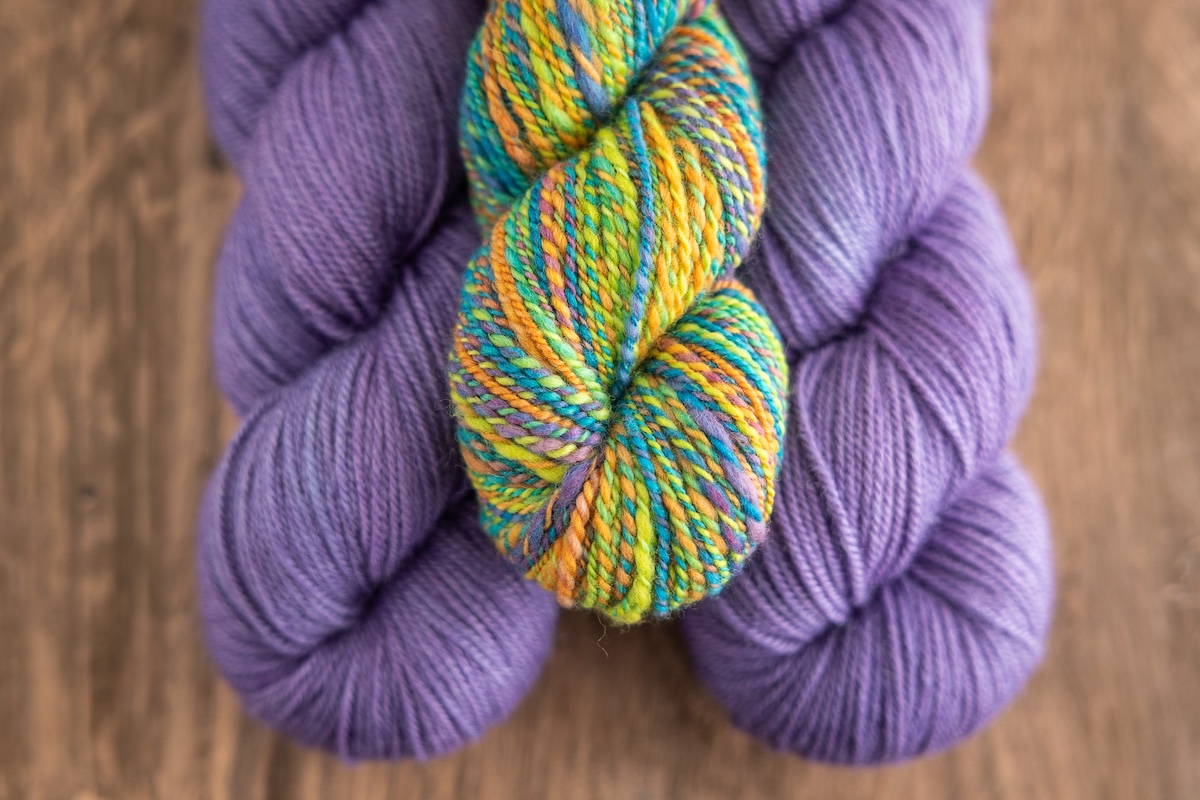
Conclusion
There are so many ways to spin colour for a sweater that we can’t cover them all here, but we hope this gives you a starting point. With Tour de Fleece just around the corner and our annual Sweater Yarn sale starting next week (June 8th), plus our Hand-dyed Fibre sale starting tomorrow, this could be the perfect time to start your next spin-to-knit colourwork project.
And don’t forget, we have a two-month Sweater Weather Knit-Along (link goes live June 8th with the Sweater Sale) for colourwork sweaters starting in August, featuring two patterns available for free to our School of SweetGeorgia members, each pattern paired with a course to help you with your stranded colourwork success. You can also purchase the stand-alone patterns, without the courses, in our SweetGeorgia shop, available later this month!
The Falling Leaves Pullover by Andrea Rangel
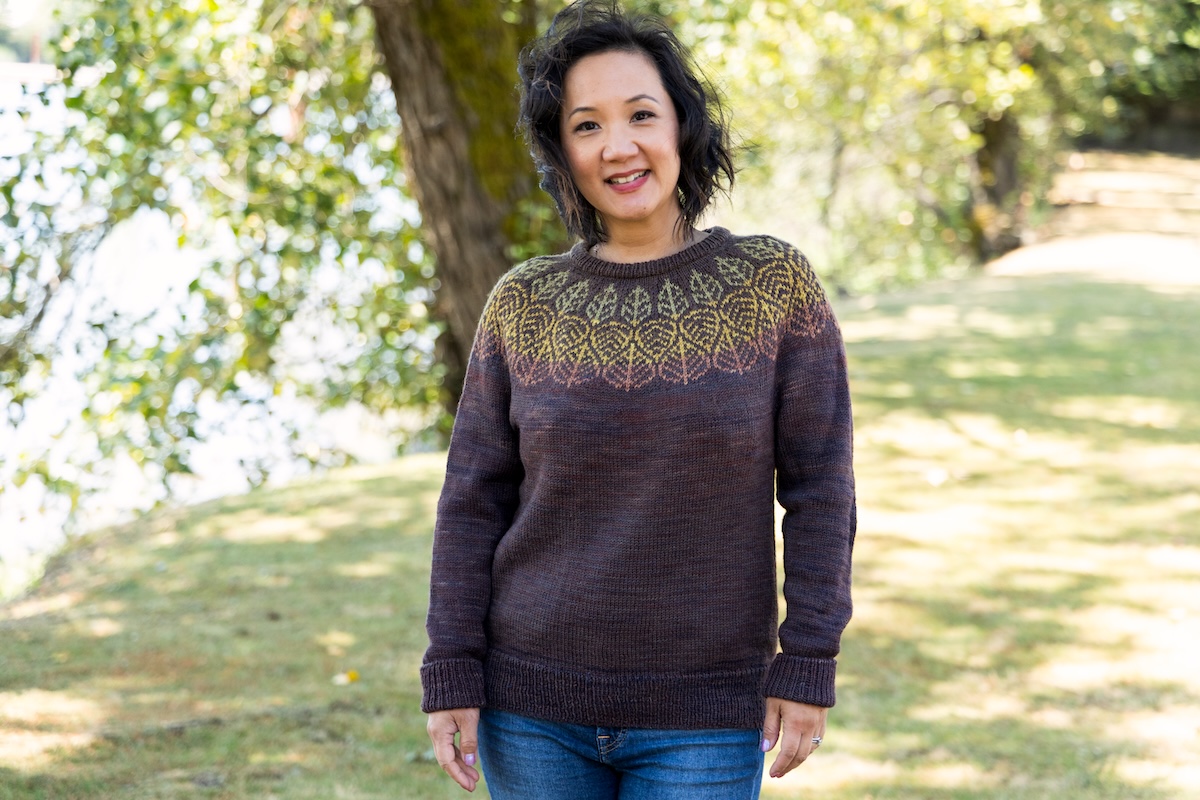
Just looking at this sweater causes a long inhale, like trying to breathe in the smell of pumpkin spice or the crisp autumn air. The Falling Leaves Pullover is worked from the bottom-up and is featured in Andrea Rangel’s Design Stranded Colourwork: Sweaters course. This is her second course with us, building on the skills taught in Design Stranded Colourwork: Hats. In both, Andrea shares her thoughtful approach to designing colourwork motifs, considering fit, using spreadsheets, and drafting complete pattern instructions. Each lesson blends creativity with technique, guiding us to design with confidence.
O’Deery Me Pullover by Caitlin Shepherd

Caitlin Shepherd’s O’Deery Me Pullover is a whimsically top-down design inspired by the charming motifs of her Deery Me Mittens. Both are charming and magical, with a touch of holiday inspiration! Both patterns are taught within her SweetGeorgia courses: Stranded Colourwork Sweater and Stranded Colourwork Mittens. Caitlin walks us through each step with care, offering tips, insights, and steady encouragement as you knit alongside her pattern and fellow members of the school.
We love make-alongs. Whether it’s the fuelled excitement of the Tour de Fleece spin-along this July or the cozy camaraderie of our Stranded Colourwork Sweater Weather Knit-Along in August, there’s something special about creating together. These events are a chance to stay connected, inspired, and supported. And connecting crafts like spinning to knit our colourwork sweaters just makes it that more exciting! We’d love for you to join us.
The post Spinning Colour! Possibilities for Stranded Colourwork Sweaters appeared first on SweetGeorgia Yarns.
Comments
Post a Comment